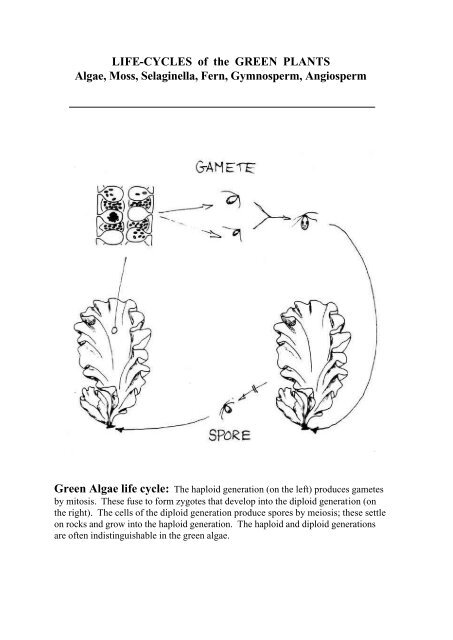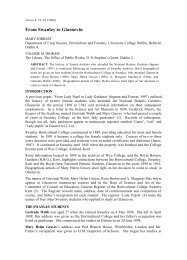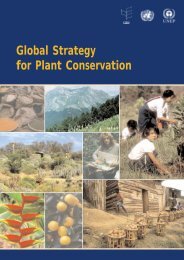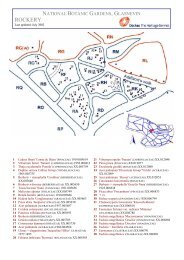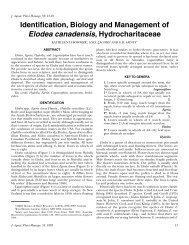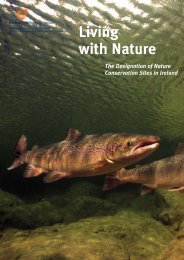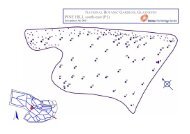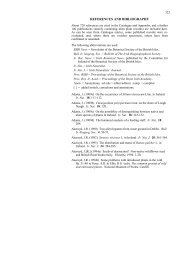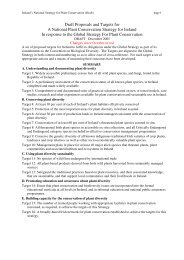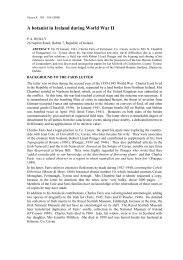LIFE-CYCLES of the GREEN PLANTS Algae, Moss, Selaginella ...
LIFE-CYCLES of the GREEN PLANTS Algae, Moss, Selaginella ...
LIFE-CYCLES of the GREEN PLANTS Algae, Moss, Selaginella ...
You also want an ePaper? Increase the reach of your titles
YUMPU automatically turns print PDFs into web optimized ePapers that Google loves.
<strong>LIFE</strong>-<strong>CYCLES</strong> <strong>of</strong> <strong>the</strong> <strong>GREEN</strong> <strong>PLANTS</strong><strong>Algae</strong>, <strong>Moss</strong>, <strong>Selaginella</strong>, Fern, Gymnosperm, AngiospermGreen <strong>Algae</strong> life cycle: The haploid generation (on <strong>the</strong> left) produces gametesby mitosis. These fuse to form zygotes that develop into <strong>the</strong> diploid generation (on<strong>the</strong> right). The cells <strong>of</strong> <strong>the</strong> diploid generation produce spores by meiosis; <strong>the</strong>se settleon rocks and grow into <strong>the</strong> haploid generation. The haploid and diploid generationsare <strong>of</strong>ten indistinguishable in <strong>the</strong> green algae.
<strong>Moss</strong> life cycle: The Gametophyte (top) is <strong>the</strong> conspicuous generation.Archegonia and an<strong>the</strong>ridia are produced at <strong>the</strong> apex <strong>of</strong> <strong>the</strong> Gametophyte (haploidplant). When a droplet <strong>of</strong> rainwater falls into <strong>the</strong> apex, <strong>the</strong> spermatozoids are releasedand swim into <strong>the</strong> archegonia, at <strong>the</strong> bottom <strong>of</strong> which sits <strong>the</strong> egg cell. Afterfertilisation <strong>the</strong> Sporophyte (diploid plant) grows on <strong>the</strong> gametophyte, from which itderives all its sustenance (parasitic). Meiosis occurs in <strong>the</strong> capsule, producinghaploid spores.
<strong>Selaginella</strong> life cycle: Gametophyte produces Mega- and Micro-spores. Themegaspores split open to reveal <strong>the</strong> female gametophyte. The Microspores developmany 100’s <strong>of</strong> motile sperm, and when <strong>the</strong> spore bursts in contact with water <strong>the</strong>seswim to <strong>the</strong> female gametophytes. This is a parallel to <strong>the</strong> situation we see in seedplants, in which <strong>the</strong> gametophyte is retained within <strong>the</strong> sporophyte.
Fern life cycle: The Sporophyte (top) is <strong>the</strong> conspicuous generation. Thesporophyte germinates from <strong>the</strong> base <strong>of</strong> <strong>the</strong> prothallus. Meiosis occurs within <strong>the</strong>sporangia.
Gymnosperm life cycle: The male cones produce pollen grains which aregametophyte plants, containing 3 nuclei. The female cones produce embryo sacswithin ovules, which contain many 1000’s <strong>of</strong> haploid cells, and develop 2-5archegonia, each containing an egg cell, at <strong>the</strong> micropylar end. Pollination occurs 12months before fertilisation (in <strong>the</strong> case <strong>of</strong> pine). Pollen grains must blow into <strong>the</strong>female cone and become attached to <strong>the</strong> pollination droplet. The pollen tubes developwhile <strong>the</strong> seed coat and endosperm grows. The male gamete is released <strong>the</strong> followingspring, thus <strong>the</strong> seed grows first, THEN <strong>the</strong> embryo. The embryos grow competitivelyif more than one archegonia is fertilised.
Angiosperm life cycle: The an<strong>the</strong>rs produce pollen grains which aregametophyte plants, containing 3 nuclei. The ovules contain a single spore mo<strong>the</strong>rcell that divides meiotically to produce 4 haploid cells, three <strong>of</strong> which abort. The lastdevelops into an embryo sac which contains 8 nuclei. One <strong>of</strong> <strong>the</strong>se is <strong>the</strong> egg cell, 2are endosperm nuclei. The pollen grain germinates on a stigma, and <strong>the</strong> tube growsdown <strong>the</strong> style to <strong>the</strong> ovule. While migrating down <strong>the</strong> pollen tube, <strong>the</strong> gamete divides(mitotically) into two. One <strong>of</strong> <strong>the</strong>se fuses with <strong>the</strong> egg cell to make a zygote (whichwill become <strong>the</strong> embryo) <strong>the</strong> o<strong>the</strong>r fuses with <strong>the</strong> two endosperm nuclei to make atriploid nucleus (3n) that will develop into <strong>the</strong> endosperm. This DOUBLEFERTILISATION means that a seed only grows if <strong>the</strong>re is an embryo. Thus <strong>the</strong> twotissues (embryo & endosperm) grow at <strong>the</strong> SAME time.


